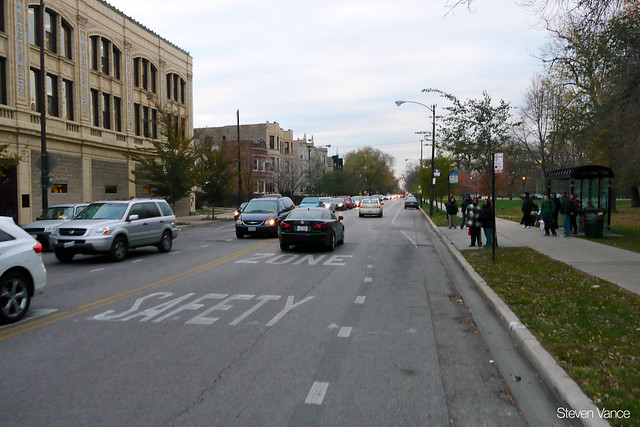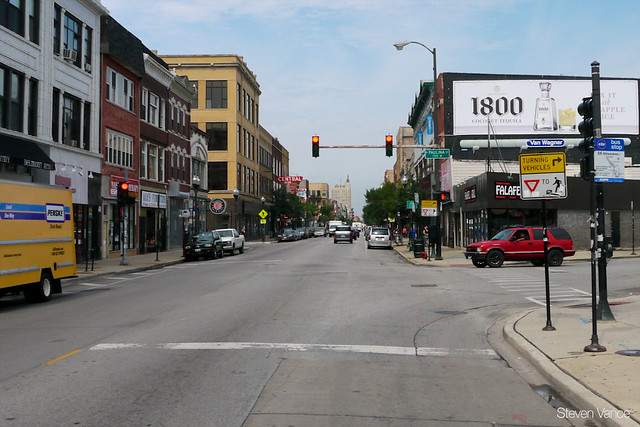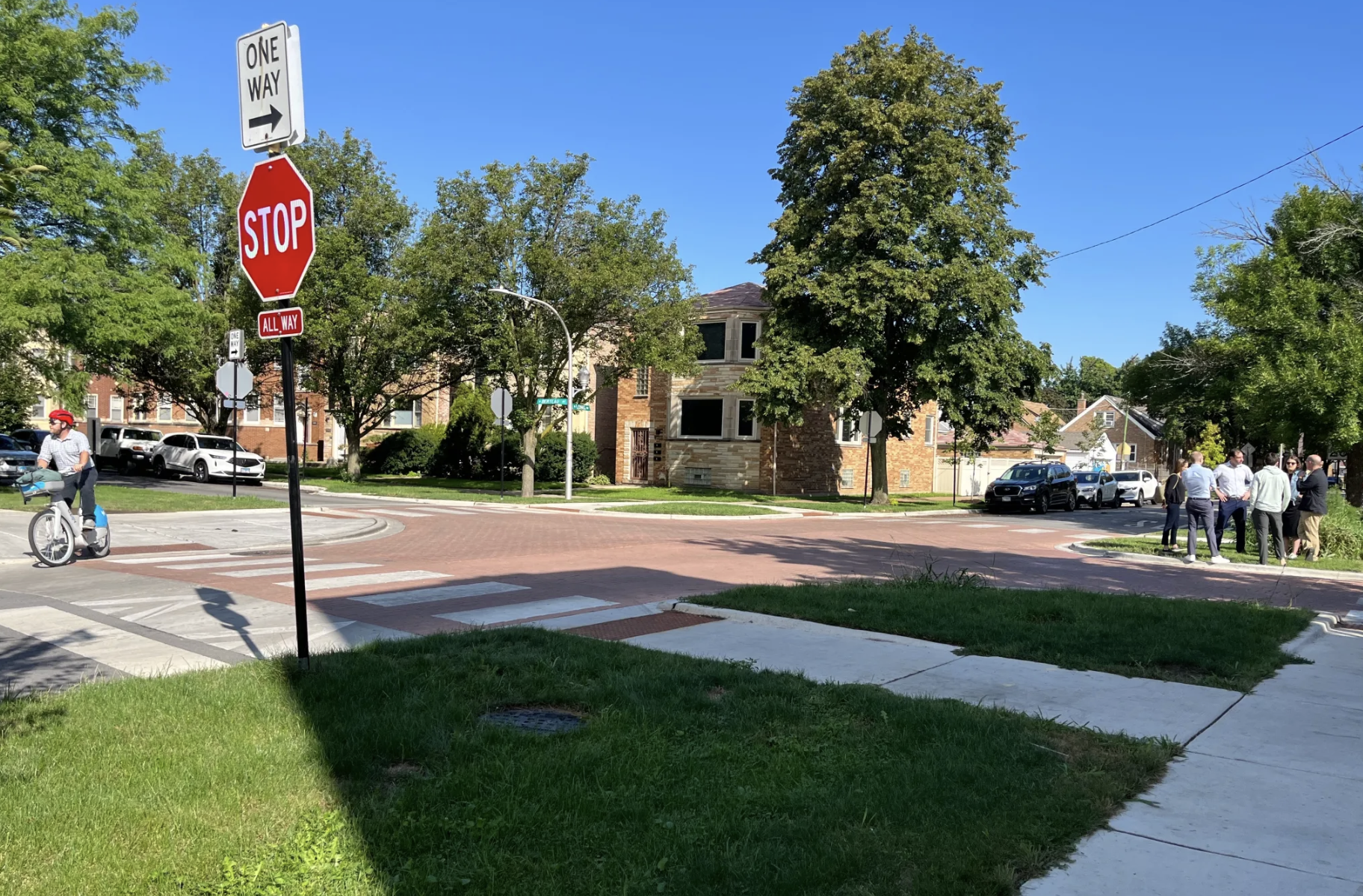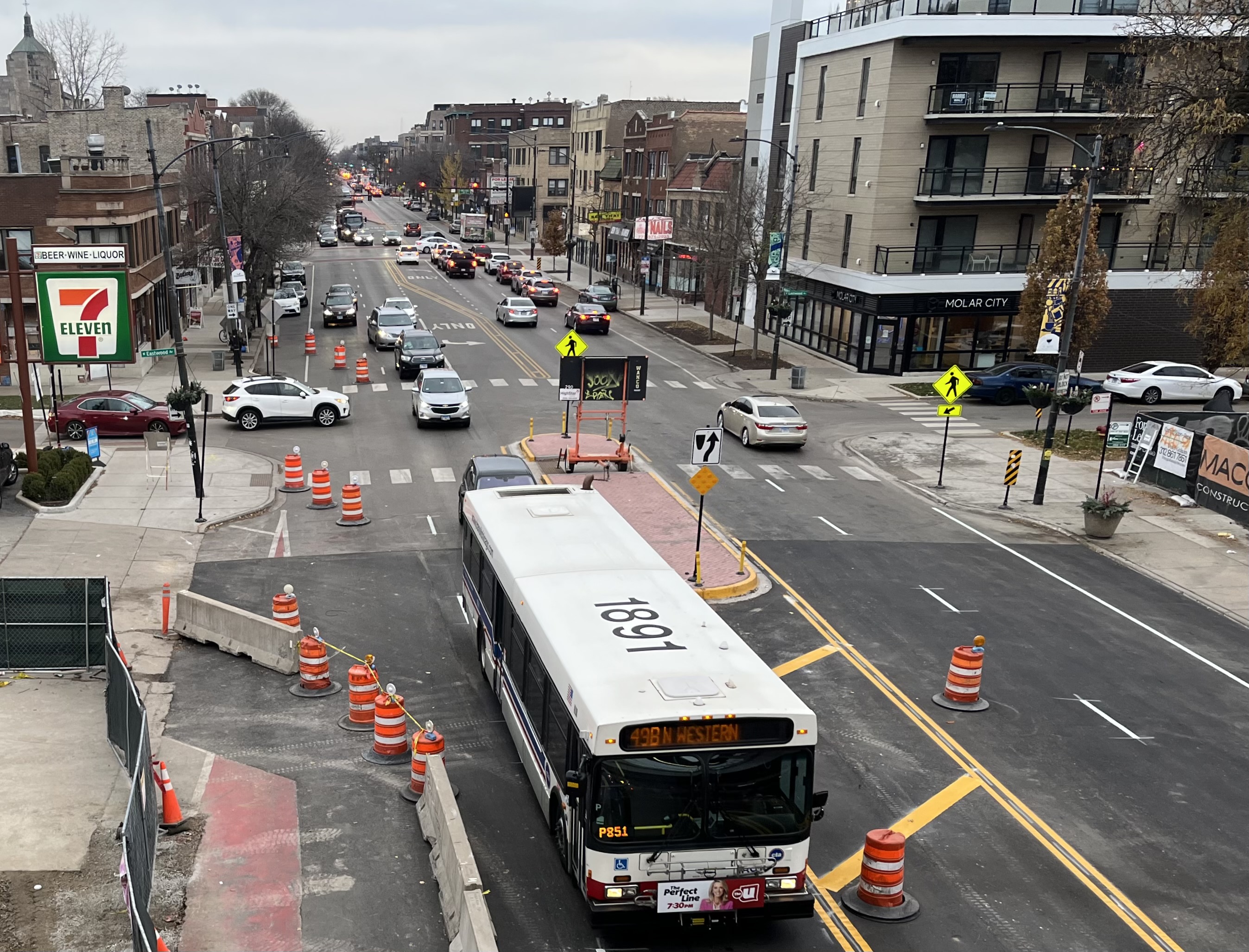The Chicago Department of Transportation plans to implement pedestrian safety measures at 50 high-priority sites near schools and parks this year, the agency revealed at last week's meeting of the Mayor's Pedestrian Advisory Council. The changes will include the addition of speeding enforcement cameras, high-visibility crosswalks, and signs to show drivers how fast they're traveling.
Last year CDOT installed dozens of high-visibility crosswalks, more than 100 "safety zone" pavement stencils, and a handful of more intensive changes like median islands and in-street pedestrian stops at 12 sites, according to David Pulsipher, the agency's safety zones project manager.
Pulsipher also shed some light on how CDOT will choose which of the city's 1,500 safety zones (areas surrounding parks or schools) will receive speed cameras. The factors include the number of collisions within each safety zone, the number of speed-related crashes, involvement of drivers under 18, and fatalities and serious injuries. After identifying a location, CDOT staff visit the site to note if the camera would have a good view of the roadway, and to see if there's electrical utility access.
CDOT feeds this information into a data model that recommends "in a non-subjective way good places for speed cameras," said transportation commissioner Gabe Klein, adding that "we have to base our decisions on science and data."
There's a different model, using somewhat different criteria, for determining where to site engineering improvements. The other model was used to determine the 12 areas that got safety improvements last year.
Here are more highlights from last week's meeting...
Mapping the implementation of "tools for safer streets"
CDOT has released a document [PDF] explaining the 16 "tools for safer streets" identified in the Chicago Pedestrian Plan and showing where these improvements have been implemented so far. Metropolitan Planning Council vice president and MPAC co-chair Peter Skosey suggested that this information should also be available as interactive online maps.
Outdated "yield to pedestrian signs" to be replaced
Currently there are dozens of outdated "yield to pedestrian" signs scattered around the city, including some outside City Hall, which don't reflect the state law requiring drivers to stop for pedestrians in the crosswalk. CDOT has been implementing "stop for pedestrians" signs since last summer. I asked what CDOT's plan was to rectify the situation and Klein said the yield signs need to be replaced "stat." He wasn't aware if data is being collected on the effectiveness of the new signs.
ACTIVATE! Design Competition applications due March 15
The ACTIVATE! Design Competition is seeking ideas for temporary use of public space at four sites. CDOT is a sponsor of the competition, and project manager Janet Attarian mentioned the agency's involvement and gave an update on the Make Way for People program, for which they have been soliciting applications of interest.
Projects constructed under the Make Way for People program include the four "people spots" in Andersonville, Bronzeville, and Lakeview.
Upcoming projects include a possible temporary street closure in Andersonville and a partial street closure on Hermitage Street in Wicker Park. Businesses and neighborhood organizations that want to apply should look over the design guidelines, the application guide, and the Make Way for People application.
IDOT to distribute traffic safety education funds in Chicago
The Illinois Department of Transportation has a $75,000 pot of money available for traffic safety education initiatives in Chicago, as part of the Safe Communities for Illinois program. IDOT program coordinator Jim Boratyn called the new pilot program a "unique opportunity for grass root organizations to 'think outside the box' and help IDOT decrease traffic fatalities within 20 targeted communities focused on males ages 18 to 34 in the City of Chicago."
Boratyn noted that black and Hispanic men between the ages of 18 and 34 are make up a disproportionate number of traffic deaths. "We are focusing on 10 black, and 10 Hispanic communities with really high fatalities and we are looking for partners in those communities who can reach out to their members." He said a downstate program funded by Safe Communities for Illinois -- Operation Teen Safe Driving in Tazewell County -- had provided incentives for teens to drive safely and launched a competition between students in different high schools to educate their peers. Before the program, which received support from the automotive industry, 15 teenagers died in car crashes in 15 months in 2005-2006 [PDF]. There have been no fatalities since launching that program in spring 2007.
Boratyn also said that Illinois has the highest seat belt usage in the United States, at over 93 percent, and IDOT is looking for ways to reach the remaining share of drivers and passengers. Since the seat belt usage figure is so high, though, it may be time to switch gears and ramp up the education about driving habits that improve pedestrian and bicyclist safety.
Up to $5,000 is available per applicant for the Safe Communities for Illinois grants, and the deadline to apply is Friday, February 15.







